Most Recent
Most Recent
Most Recent
Most Recent
Most Recent
Most Recent
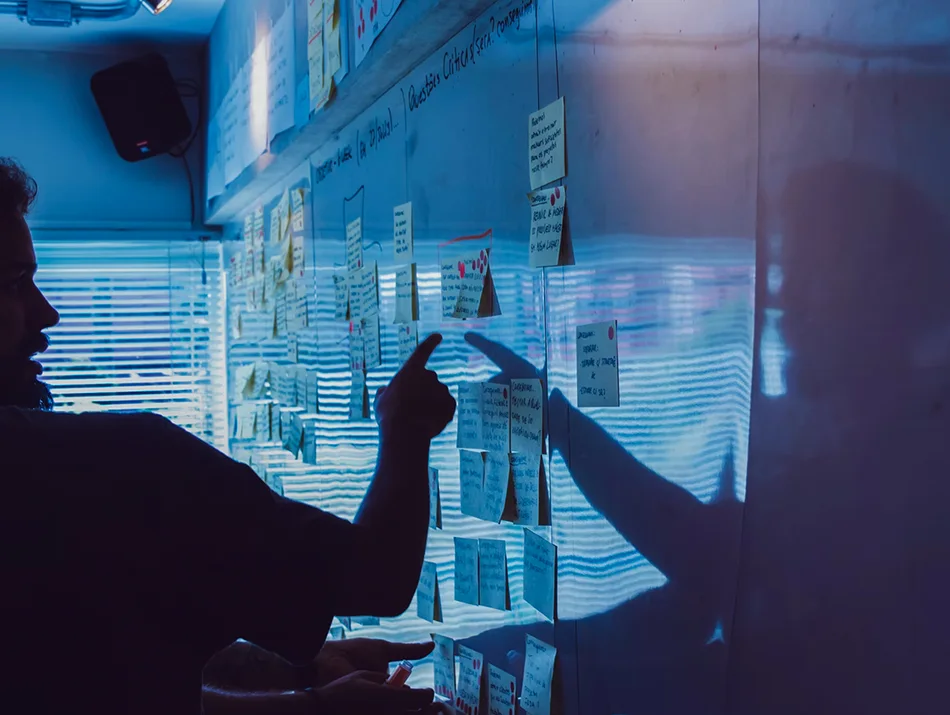
Today’s companies are fiercely competitive and forced to utilize technology to help them stay ahead. With the competitive landscape changing on a dime, an enterprise must be Agile and flexible while increasing productivity and efficiency in order to survive, nevermind to succeed!
Being an Agile enterprise isn’t optional anymore — it’s a necessity.
You’ve probably already tried adopting Agile methodologies to solve your problems and aren’t seeing the results that you expected. If you want to transform your entire organization, your teams must:
Anything less leaves you trapped in a consistently frustrating cycle of trying to catch up. It’s time to level up your Agile practices and get the results that you need.
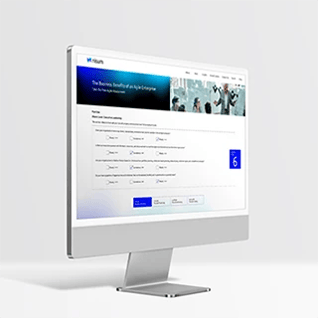
This Agility Assessment is a high-level, directional evaluation to help you measure your company's Agile maturity. It only takes a few minutes to complete and will give you clarity on the best path forward.
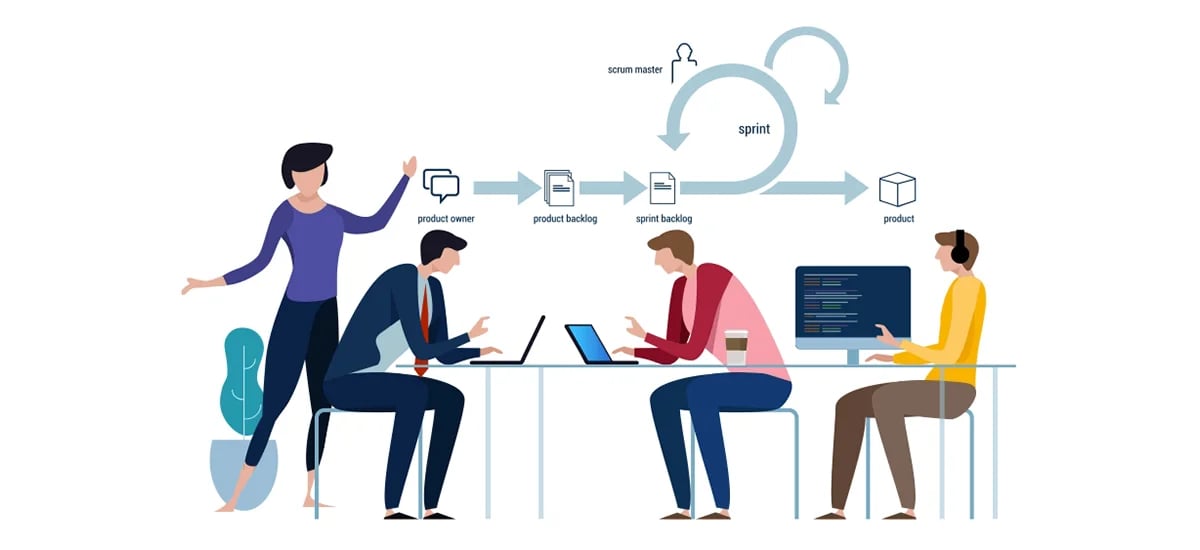
Business agility — or an enterprise utilizing the Agile methodology — is simply a set of processes and principles that enable a company to do work predictably. It’s a cultural shift that enables teams to work together towards common goals while working on measurable improvement.
Agile practices help give leaders transparency into what their people are doing in real-time.
These practices bring disparate functions together, led by the Business Agility Team, with the goal of improving productivity and transparency throughout the company.
That may sound complex, but it’s quite simple when you break it down.
Changing an entire enterprise culture to be Agile can be complex, but you’ll begin to see results immediately.
Here are 10 key benefits that enterprises witness once an Agile methodology and process is put in place and has scaled across a functional unit, a business unit, or the entire organization.
Without Agile, you have an exhaustive list of tasks that all need to be done. There are always obstacles and communication challenges in every project that cause inevitable delays.
Agile gives you the tools you need to:
In a properly-implemented Agile environment, you have clear and predictable deadlines for work. It’s easy to see what’s going to be done and when you can expect it to ship.
When you know how much work is getting done in a given timeframe, it’s no surprise that you also can plan the staff and labor-hours you need to achieve that result.
Scrum rituals allow your team to work and deliver batches of work on a regular and predictable basis. This allows them to easily wrap up one batch and pivot to a new batch of work as needs and situations change. The Agile mindset also helps to build a culture of continuous improvement which allows the organizations to bring a change seamlessly.
Stakeholders are the customers or internal advocates that have “skin in the game” — they are financially and emotionally invested in the results. When you are delivering work on time and in a transparent manner, they get excited and are more willing to participate where they are needed.
Scrum is a value-based framework. Work is prioritized based on which tasks have the highest value to the stakeholders and end customers.
This mindset shift is crucial for success. Instead of trying to figure out which tasks to do first based on complexity or time constraints, you are putting the needs and desires of the customers first and balancing that against the capacity of your team. As a result, you’ll focus on the work that garners the highest customer satisfaction.
There is less that can “go wrong” in a well-organized Scrum team because everyone knows to address potential problems before they can happen.
In an Agile environment, releases can be done one of a few ways:
With each Sprint, you will continue to develop and learn new things that could influence the next release, and working in sprints keeps the team laser-focused only on the work in that current Sprint so they deliver each Sprint quickly and efficiently. This process helps everyone stay focused on delivering value with each release and avoids unnecessary interruptions that delay delivery.
By shipping batches of work quickly, you get more features to market faster. This means that you can quickly release solutions that end-users are asking for. This is a serious competitive advantage for both internal and external applications.
Organizations that truly want to leverage Agile and scale up their results can combine Agile with DevOps and CI/CD (Continuous Improvement/Continuous Deployment) to achieve transformational results.
Agile focuses on process improvement by highlighting change and accelerating delivery. It removes process barriers and helps to enable the key stakeholders to collaborate on accelerating delivery.
DevOps is a cultural shift designed to break down the barriers between your Operations and Engineering teams by cross-training each team on the other team’s skills. It highlights tools and emphasizes automation.
This culture of cross-training helps your organization avoid the negative impacts of overspecialization. Everyone is able to appreciate and participate in each other’s tasks, and you experience more frequent communication and high-quality collaboration.
CI/CD is a process of Continuous Integration and Continuous Deployment. It focuses on highlighting roles and emphasizing responsiveness. High-functioning CI/CD processes can directly facilitate Agile development by allowing releases to reach production more frequently and provide customers with more opportunities to provide feedback.
Agile frameworks thrive because of the culture of communication that they create. Daily stand-ups, sprint reviews, sprint planning, and processes for communicating stakeholder expectations all combine to ensure that your team is operating on the same page towards a common goal.
Developers aren’t operating in a bubble anymore. They get regular and constructive input from the end-users that will ultimately rely on their programs every day.
Your dev team members know the purpose of the features they are developing and have insights into how users will utilize those features in their daily tasks.
All of these factors result in a more refined overall user experience.
There are a variety of different frameworks that you can choose from that best suit your company’s needs
One of the more popular pre-built frameworks for Agile teams is called Scrum. It is a framework that allows people to address complex and ever-changing challenges using simple ritualized processes and cultural changes. These processes enable a cultural shift in mindset that makes Scrum an effective tool for implementing Agile practices in your company.
The core idea is to maximize customer value while minimizing waste. Simply, lean means creating more value for customers with fewer resources (people, effort, and energy of your organization). It is based on two guiding tenets - continuous improvement and respect for people.
A workflow management method designed to help you visualize your work, maximize efficiency, and become more Agile. Kanban started in manufacturing but was later adopted by Agile software development teams.
Disciplined Agile Delivery (DAD) is a people-first, learning-oriented hybrid Agile approach to IT solution delivery. It has a risk-value delivery lifecycle, is goal-driven, is enterprise aware, and is scalable.
LeSS is Scrum applied to many teams working together on one product. It’s about figuring out how to apply the principles, purpose, elements, and elegance of Scrum in a large-scale context, as simply as possible.
SAFe® for Lean Enterprises is a knowledge base of proven, integrated principles, practices, and competencies for achieving business agility using Lean, Agile, and DevOps. It is built around the Seven Core Competencies of the Lean Enterprise:
Before determining if the processes, techniques, and principles of Agile methodology are the best, companies must first introspect to make an informed decision on the best methodology to use. Once the methodology is determined, the framework can be picked based on the needs of the organization for a structured approach vs an adaptable approach to build one’s own processes. Here is a useful matrix to select the right approach:
The Problem-solution Matrix To Choose the Development Approach
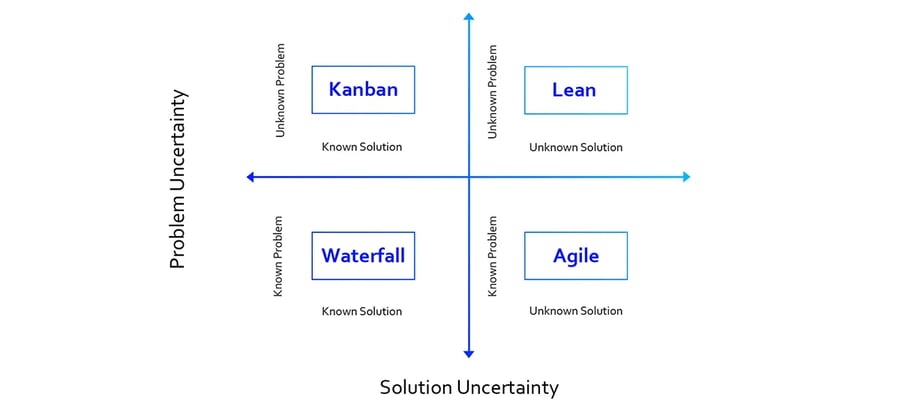
Many companies will start with some version of Scrum when they start looking at “going Agile,” and over time, they will begin to adapt the traditional model into something that fits their needs.
The Scrum framework is used by over 12 million people around the world for big and small teams. Let’s take a high-level look at what the Scrum Framework is and how it works.
Scrum Masters are responsible for leading and training the overall team in Scrum processes, theories, and rituals. They are ultimately responsible for building and maintaining the Agile culture that you must have to be successful.
Product Owners are team members who represent the customers and are experts in the product or function and how the customer uses it. They are internal advocates that drive the Product Backlog — a prioritized and ever-changing list of items that are wanted or needed for the overall product.
Program Managers are subject matter agnostic team members who lead the cross-functional management of the project.
Self-Organizing Development Teams are non-hierarchical teams that work together on their own without external supervision. They are capable of planning and making their own decisions within the team.
Before a Sprint starts, the team comes together for a Sprint Planning Session to plan the work that will be done during that Sprint. Those tasks get moved into the Sprint Backlog — a prioritized list of work that is going to be done in this Sprint.
The team will meet each day for 15 minutes in a ritual called a Daily Scrum that helps keep the team focused, organized, and remove any blockers that could slow down progress.
At the end of the Sprint, the Scrum Team and Stakeholders will come together for a Sprint Review session to review the work done in that Sprint.
Finally, the Scrum Team will come together for a Sprint Retrospective where they evaluate how well (or how poorly) they got work done in the previous Sprint. They discuss steps they can take to improve their performance going into the next Sprint.
Example Sprint Cycle
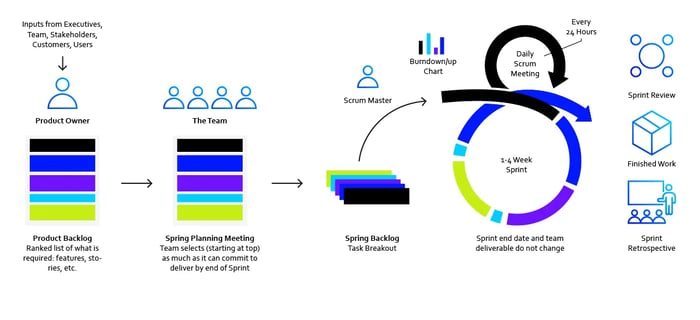
A culture of agility has a sweeping impact on all types of businesses and all business operations. Stakeholders, developers, and customers all feel the difference, whether you’re manufacturing products or delivering services.
Traditional roles in your company will change. Employees in those roles will see a shift in their job functions and overall approach. Processes that you may have relied on for years will also need to adjust — such as your delivery, communication, and change processes.
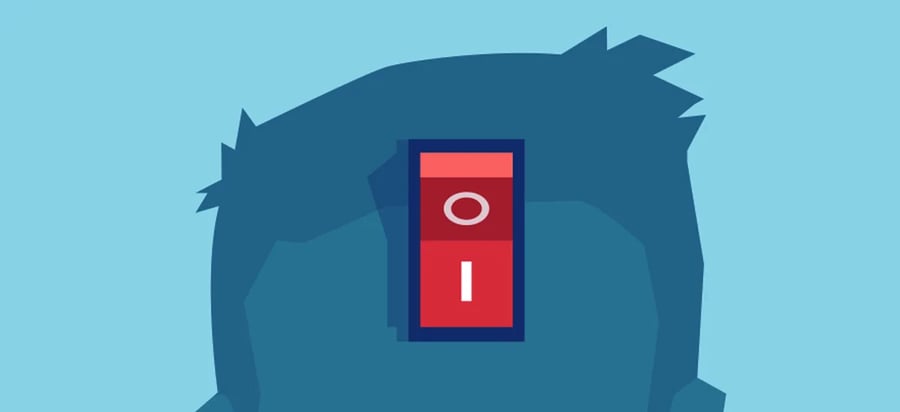
Project Managers will need to make a fundamental shift in the way they approach their job duties if they are going to be effective in an Agile environment.
Traditionally, they would approach work from a perspective of either:
You paid me to do this project, so I will deliver this list of results.
You hired me to run this project, so I’ll keep it running.
Agile Project Managers need to think about this differently.
You are spending money on this project, so I want to make sure you get the value and results you’re looking for.
You hired me for this program, so I want to make sure it’s meeting all your expectations and you get the value you need from it.
This shift in mindset is subtle — but powerful. When they approach their job thinking in terms of a cosmic to-do list, they will always be seeking to simply check things off.
When they start thinking about the overall project and what the impact is on your business, they start to think outside the box. They start to consider how things can be done better, smarter, and faster. They begin to focus on how that project or program is going to be more valuable. That’s a transformative and positive shift for your company.

Without Agile, your workload is typically prioritized within individual departments or inside of individual projects. This approach is tactical rather than strategic and often results in resources being stretched too thin and not meeting deadlines.
Agile methodologies give you the big picture view that you need. You can look at the full body of work that needs to be done across all departments and projects.
You’re able to see not only what needs to be done, but also the importance and value of the work for the company. Your teams can prioritize the work that will have the biggest impact and focus on getting those tasks done first.
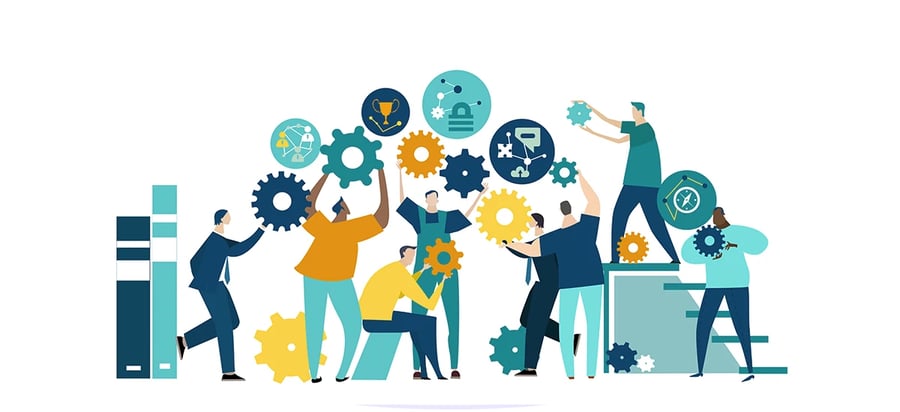
Many organizations have a task-focused culture and mindset. Particularly at the individual contributor and middle management level, most team members identify a finite checklist of what needs to be done and then spend their days crossing them off.
However, in an Agile enterprise, the mindset is completely different. People who have an Agile mindset are focused on the end result they want to achieve, and they continuously test and learn different solutions in order to get that result in the most efficient way.
Typically, an Agile enterprise leverages the Learn, Build, and Measure cycle to achieve this.
Learning involves studying the problem, forming hypotheses, and ideating solutions to achieve the result.
Building is creating and developing those solutions and testing them both in pilots or and in the market.
Measuring is establishing quantifiable success metrics and continuously evaluating them to understand how well the solution is delivering the desired results. This measuring feeds continuous Learning and the cycle begins again.
Therefore, the Agile culture will elevate an enterprise’s collective strategic thinking, understanding of their marketplace, efficiency, and focused on continuously optimizing for success.
Change is hard. Changing your team over to Agile frameworks like Scrum is even harder.
At Nisum, our experts can help. We provide our own framework, the Nisum Enterprise Agile Framework (NEAF), to help our clients more effectively institute an Agile culture.
Our NEAF approach provides a framework structure over a heavy, theory-driven playbook. It’s sustainable to enable customers to be more independent in their transformation journey.
To identify the areas of your Agile processes that are not working and to receive guidance on how to solve them, take our free Agile Maturity Assessment.
This Agility Assessment is a high-level, directional evaluation of where you are now and the necessary steps to reach the next level. It only takes a few minutes to complete and will give you clarity on the best path forward.